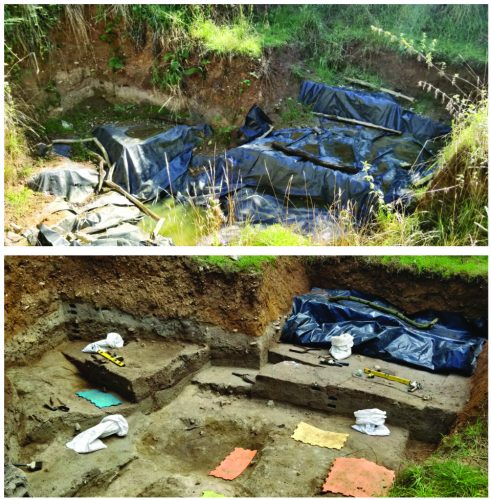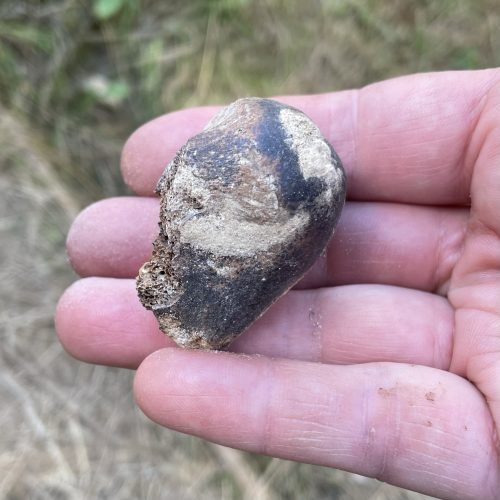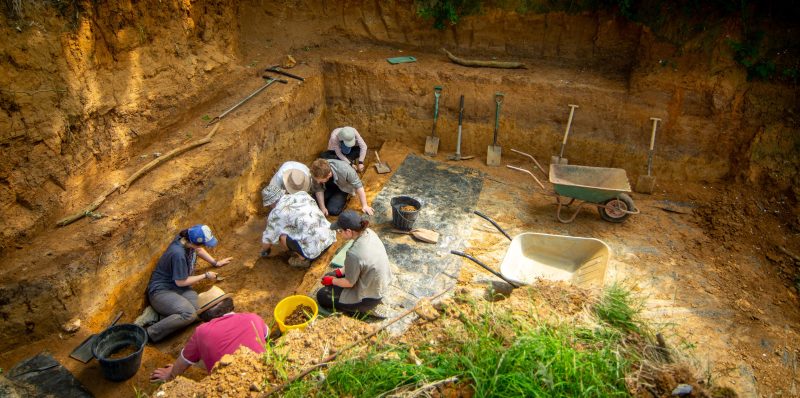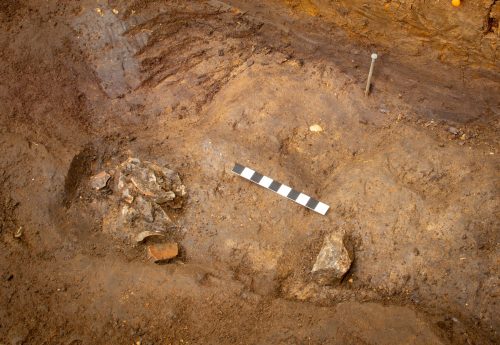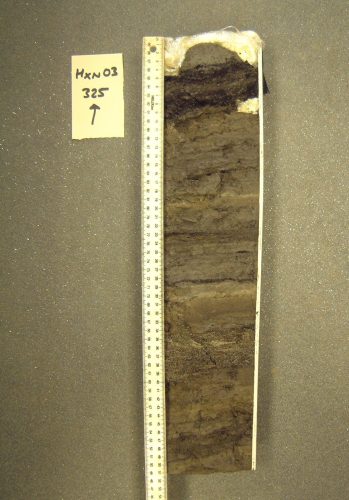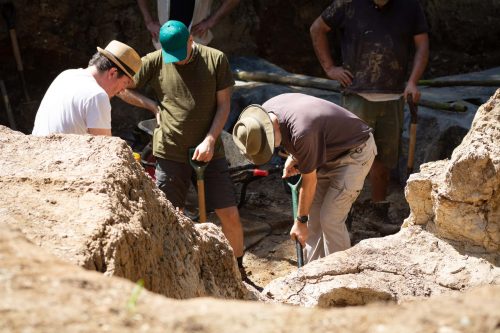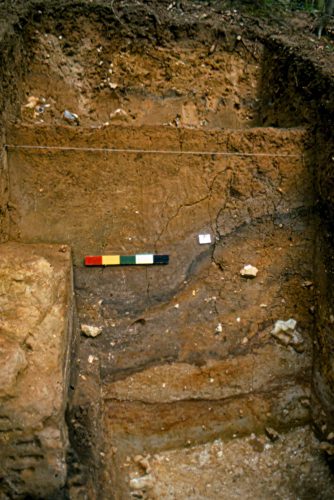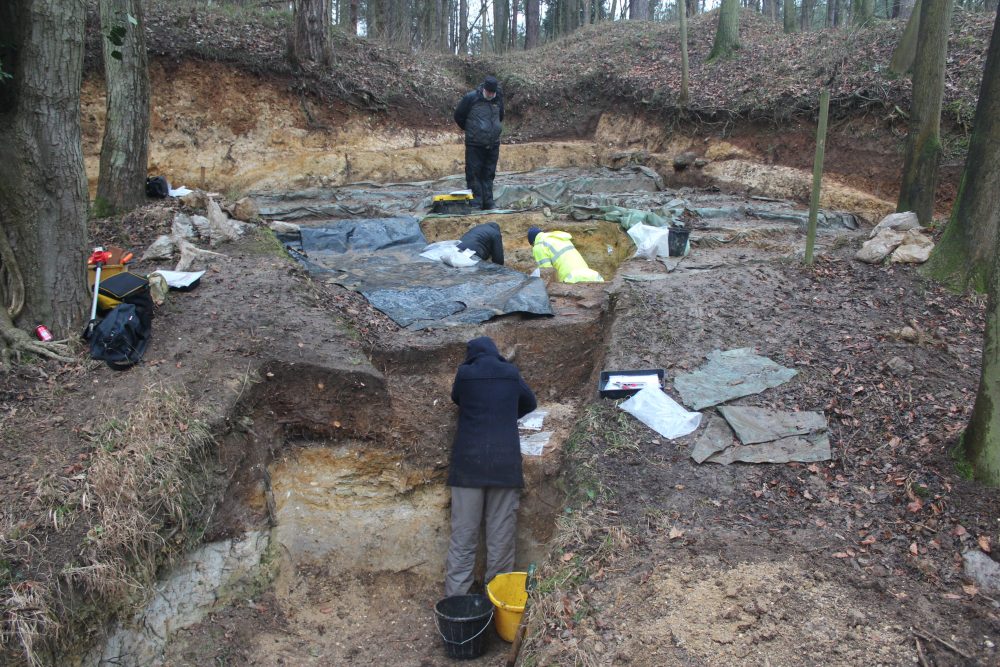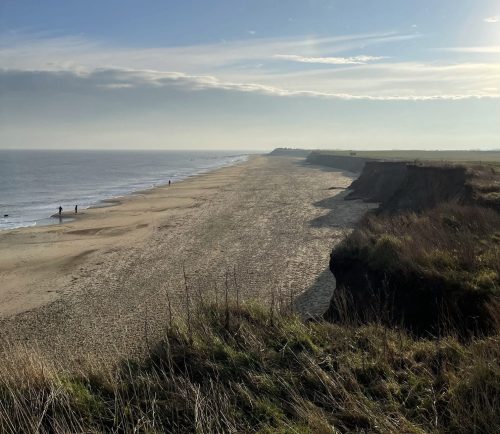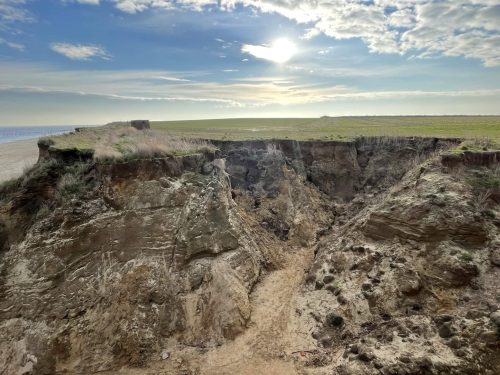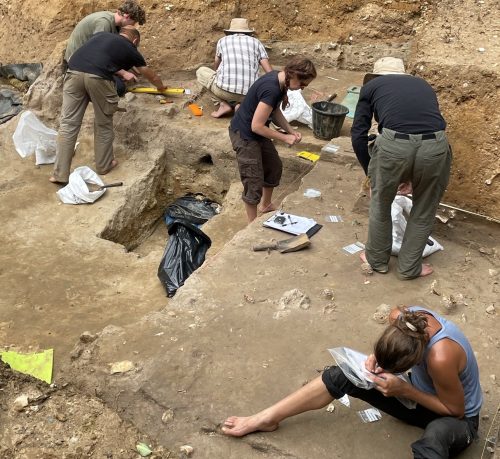PAB researcher and excavation director Dr Rob Davis reflects on the 2024 excavation

The 2024 field season at Devereux’s Pit marked the beginning of a new phase of research at this 400,000-year-old Lower Palaeolithic site. Our previous excavations had focused on an area (Area I) near the margins of an ancient waterbody, where humans had exploited flint cobbles and nodules to manufacture stone tools. The Area I sediments are decalcified, meaning bones and other organic materials are not preserved. This limits our understanding of the archaeology. If they were present, animal bones might preserve traces of butchery or other evidence of human-animal interactions. They could be used to reconstruct the ancient environment by looking at the types of habitats preferred by the different species of animals represented, and might also provide a means of relative dating through biostratigraphy. We do know from contemporary descriptions of the site that workers digging the pit for clay in the late 19th Century did find bones, antlers and shells in the sediments. It is also reported that they promptly reburied the bones! If we want to understand the environmental context of the human presence at Devereux’s Pit 400,000 years ago, we need to identify and excavate sediments that preserve faunal remains.
The search for suitable deposits has been ongoing alongside the archaeological excavation. During the 2021, 2022 and 2023 field seasons, we extracted 41 sediment cores from boreholes located across the site in order to map the distribution and geometry of the sediments. From these we identified calcareous sediments with the potential to preserve bone and shell at various depths and in various locations towards the centre of the waterbody. This included a silty sand encountered 2 m below the surface and approximately 8 m to the west of Area I, which contained a beautifully preserved head of a red deer femur (see 2023 field season post). This remarkable find made this the obvious target for the 2024 season, with the aim to excavate a 4m2 area of this deposit to recover more bones and hopefully begin to build up a picture of the range of species and habitats.
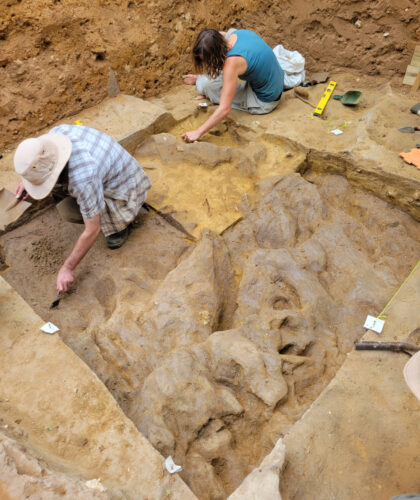
The excavation of Area II began using a mini-digger to remove the 1 m thick backfill that overlies the Pleistocene sediments and forms the floor of the pit today, from a 4 x 4 m area. This revealed a series of rectilinear 19th Century quarry pits that had been dug through clays, stopping on the surface of a sand deposit. We then set-out a 2 x 2 m area and commenced more careful excavation. We encountered a series of decalcified clays and sands overlying the calcareous silty sands. Artefacts were present in low numbers throughout. The archaeological sequence conformed to that of Area I, with handaxe manufacturing flakes associated with the clays at the top of the sequence, and cores and flakes from the sands below.
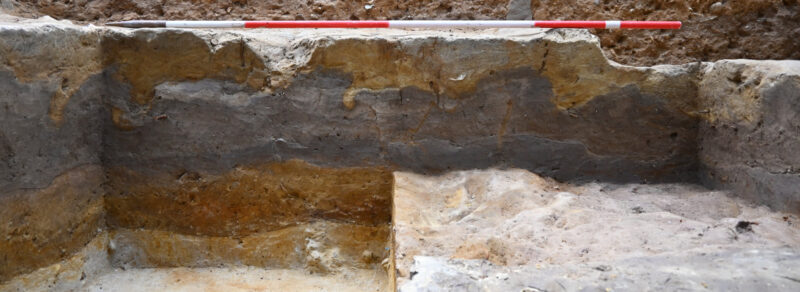
In one half of our trench, we encountered a grey clayey sand with a rippled surface, on which lay several fresh flint flakes and the base of a very large deer antler. This appears to be an ancient land surface at the edge of a small stream. It has been carefully covered for further investigations in the future, including extending the trench to trace the surface to the south and west, with the potential of identifying in situ archaeology.
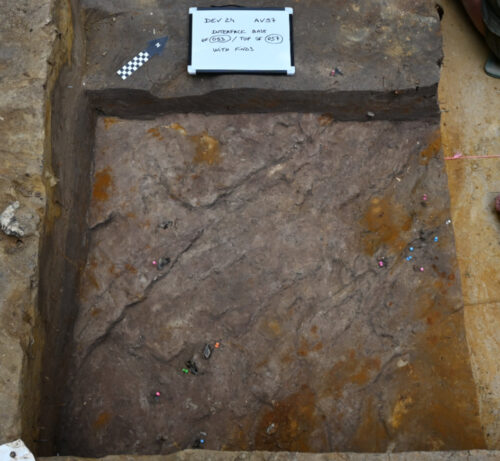
We reached the calcareous silty sands during our third and final week of excavation. It quickly became apparent that while bone was preserved, it was fairly sparsely distributed through the sediment. As we approached the level of the red deer femur, recovered from the borehole during the 2023 season, several other large deer bones were encountered alongside an incredibly fresh flint core. It seems that our femur may be part of a deer carcass that became disarticulated and dispersed over a small area. Post-excavation work on the bones is underway, and it remains to be seen whether there are any cut-marks, but the associated flint core at least raises the possibility of a butchery site. Future work in Area II will expand our excavation area to recover more of the deer carcass and see if there are any more artefacts associated with it.
The first phase of work at Devereux’s Pit will be published in a forthcoming paper, which will present new evidence for the Clactonian-Acheulean succession c. 400,000 years ago. A recent summary of the archaeology of this time period in Europe can be found here.


